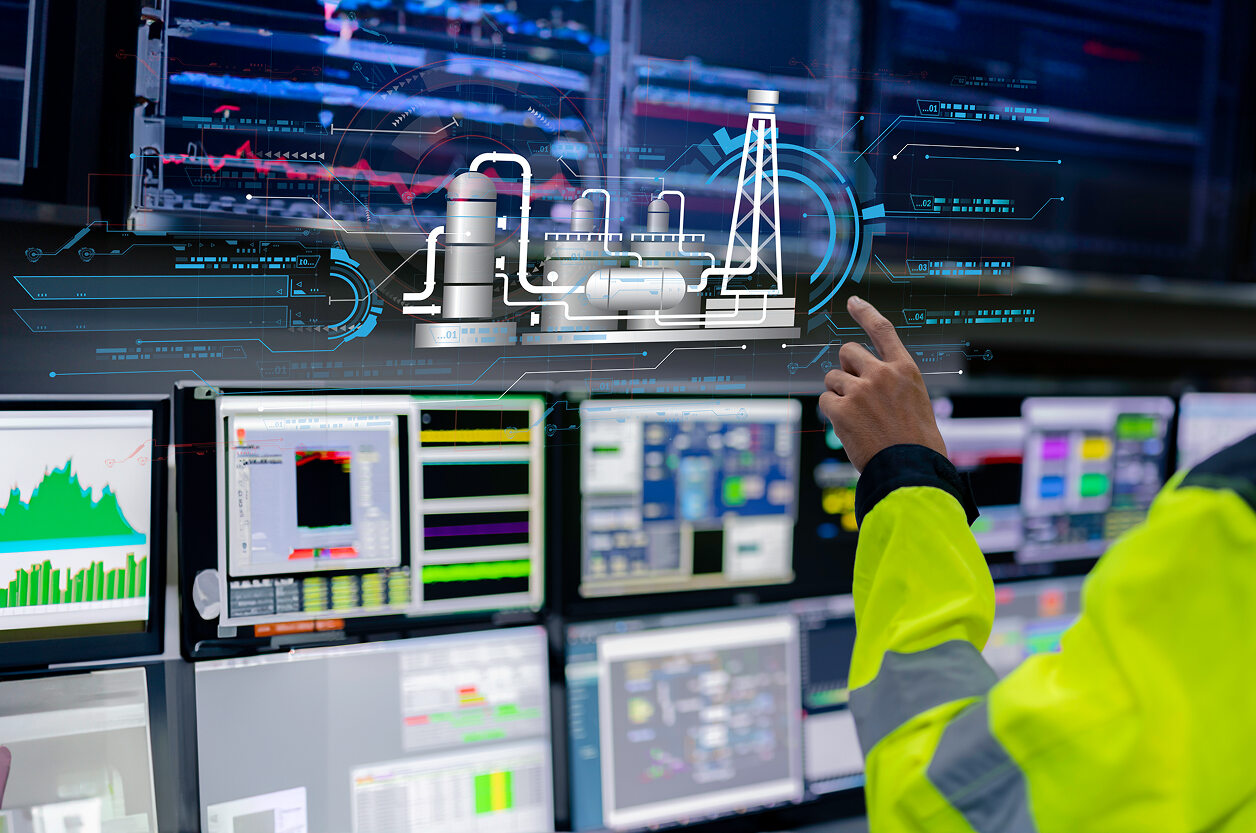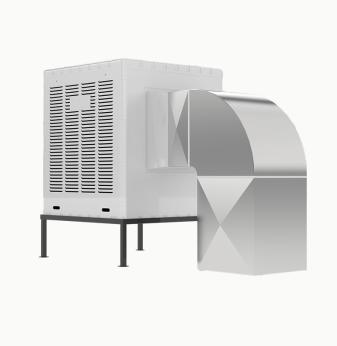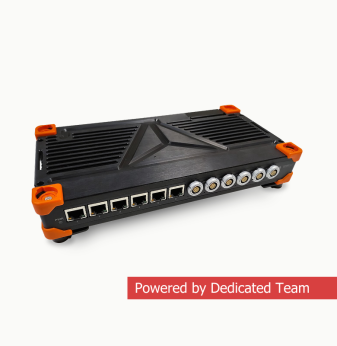How Embedded AI Is Transforming Power-Grid Monitoring and Control

Power grids are no longer passive infrastructures delivering electricity from point A to point B. They’ve become dynamic, data-rich ecosystems where millions of embedded devices — from sensors and controllers to transformers and relays — constantly monitor, analyze, and optimize power flow.
At the heart of this transformation lies embedded AI. By moving intelligence closer to the edge — into the devices themselves — the energy industry is gaining unprecedented visibility, predictive capability, and resilience.
From smart transformers that detect faults before they happen to AI-driven substation controllers coordinating distributed energy resources (DERs), embedded AI is redefining what “grid reliability” really means.
Why AI belongs inside the grid — not just in the cloud
For years, utilities have relied on centralized SCADA and cloud-based analytics to process grid data. But as grids become more distributed — with renewable generation, EV charging, and microgrids — that model no longer scales.
Cloud systems struggle with latency and bandwidth when every node produces high-frequency data. Sending terabytes of voltage, current, and thermal readings to a central server simply isn’t practical or secure.
That’s why intelligence is now being embedded directly at the source — inside transformers, relays, and edge controllers.
Local AI models can analyze streaming data in real time, detect anomalies, and act autonomously without waiting for remote instructions.
This edge-first architecture enables:
- millisecond-level fault detection;
- lower data transmission costs;
- enhanced cybersecurity;
- and resilience in disconnected or rural networks.
In other words, the grid starts thinking for itself.
Smart transformers: AI at the core of power conversion
Transformers have traditionally been “dumb” devices — heavy iron cores converting voltage with minimal feedback. But as embedded sensors and microcontrollers enter the picture, transformers are becoming smart edge nodes.
Embedded sensing
Modern transformers integrate sensors for:
- oil temperature and moisture,
- vibration and acoustic patterns,
- winding hot spots,
- partial discharge detection,
- and harmonic distortion.
On-device analytics
AI models running on embedded processors interpret this data to detect early warning signs of insulation degradation, overheating, or mechanical stress.
For example, convolutional neural networks (CNNs) can classify acoustic patterns associated with partial discharges, while regression models predict remaining insulation life.
By continuously learning from real operating conditions, smart transformers can autonomously adjust tap changers, alert maintenance crews, or re-route power to maintain grid balance.
Substation controllers with embedded AI
Substations are the nerve centers of the grid — connecting transmission and distribution systems, regulating voltage, and managing protection relays.
Traditionally, substation controllers have relied on fixed logic, programmed once and rarely updated.
Now, embedded AI brings adaptive decision-making into these controllers.
Real-time anomaly detection
AI algorithms analyze high-frequency data from breakers, relays, and transformers to detect faults such as arcing, current imbalance, or cyber intrusions.
Instead of triggering alarms after an event, they recognize precursors — subtle deviations invisible to rule-based systems.
Load balancing and energy optimization
Reinforcement learning models embedded in substation controllers can dynamically balance loads and prioritize renewable inputs, improving grid efficiency without human intervention.
Fault localization and isolation
When a fault occurs, embedded AI can estimate the fault location using real-time waveform analysis, allowing automated isolation and minimizing outage duration.
These AI-enhanced controllers essentially turn substations into autonomous agents within the grid — capable of both protecting and optimizing themselves.
Predictive maintenance at the edge
Maintenance in power systems has long been reactive or schedule-based. With embedded AI, it becomes predictive.
Edge devices constantly monitor their own health and environment, building models that learn what “normal” looks like. When deviations appear — vibration patterns, harmonics, or temperature spikes — they generate early warnings.
Key techniques include:
- Anomaly detection using autoencoders — learning normal sensor patterns to flag outliers;
- Regression-based degradation modeling — predicting remaining useful life (RUL);
- Federated learning — sharing AI model insights across devices without sending raw data to the cloud, preserving privacy and bandwidth.
By shifting intelligence to the edge, operators reduce unplanned downtime, extend equipment lifespan, and save millions in maintenance costs.

Embedded hardware and AI architectures
The success of edge AI in energy systems depends on efficient embedded hardware. Power infrastructure operates under harsh conditions — temperature, EMI, and isolation constraints — so hardware must balance performance with ruggedness.
Common embedded platforms:
- ARM Cortex-A/M SoCs with integrated AI accelerators for local inference;
- FPGAs for deterministic signal processing and protection logic;
- DSPs optimized for harmonic and vibration analysis;
- RISC-V MCUs in low-power sensing modules.
Software frameworks:
TinyML, TensorFlow Lite for Microcontrollers, and vendor-specific AI runtimes (e.g., NXP eIQ, Microchip MPLAB ML) enable efficient inference within limited memory and power budgets.
Security integration:
Hardware-based roots of trust (HRoT) ensure firmware integrity, while secure communication stacks (TLS, OPC UA Security, MQTT-SN) protect edge-to-cloud data flow.
The result: AI doesn’t live in a distant data center — it’s embedded in silicon, next to the sensors themselves.
Integration with digital twins and SCADA
Embedded AI doesn’t replace existing systems — it complements them.
Local inference handles immediate response, while processed insights are shared with SCADA or digital twin platforms for visualization and optimization.
For example:
- Smart transformers send aggregated health metrics to digital twins that simulate network load.
- Substation controllers push feature vectors — not raw waveforms — to the cloud, reducing bandwidth by 90%.
- Central AI retrains global models and distributes updates back to edge devices via over-the-air (OTA) pipelines.
This hybrid model bridges local intelligence and centralized coordination — forming the foundation of self-healing grids.
Industrial benefits of embedded AI adoption
| Benefit | Description |
| Reduced downtime | Predictive insights prevent failures before they occur. |
| Operational efficiency | Edge decision-making reduces control latency. |
| Scalable infrastructure | Local processing minimizes data load on central servers. |
| Cyber resilience | Decentralization limits attack surface and dependency on the cloud. |
| Sustainability | Improved asset longevity and energy optimization reduce environmental footprint. |
For utilities facing aging infrastructure and volatile renewable inputs, these gains are not incremental — they’re transformative.
Challenges and limitations
As with any disruptive technology, embedding AI into grid devices introduces new challenges:
- Model validation: Ensuring AI decisions meet safety-critical standards (IEC 61850, IEC 61508).
- Hardware constraints: Balancing inference power with thermal limits and isolation requirements.
- Lifecycle management: Updating and retraining models securely across distributed networks.
- Interoperability: Integrating AI-ready devices with legacy protocols.
- Human factors: Building trust among operators in AI-generated insights.
Addressing these requires close cooperation between utilities, chip vendors, and embedded system integrators.
The path forward
The energy transition — toward renewables, decentralization, and electrification — demands an equally smart grid.
Embedded AI is the key enabler: it brings intelligence to the edge, autonomy to control nodes, and foresight to maintenance systems.
By 2030, expect to see:
- AI-native transformers and relays standard in new installations;
- Federated learning frameworks connecting thousands of substations;
- Edge-to-cloud synchronization for continuous model improvement;
- Hardware-level AI acceleration integrated into power electronics.
In this future, every transformer, breaker, and sensor becomes more than a component — it becomes a thinking entity within an adaptive, self-managing grid.
AI Overview: Embedded AI in Power-Grid Monitoring
Embedded AI enables real-time intelligence within power-grid assets such as transformers, relays, and substation controllers, improving reliability, efficiency, and safety.
Key Applications: smart transformers, substation automation, predictive maintenance, load balancing, distributed energy resource management.
Benefits: reduced downtime, real-time fault detection, lower data latency, decentralized decision-making, improved asset longevity.
Challenges: safety certification, model lifecycle management, interoperability with legacy systems, embedded hardware constraints.
Outlook: by 2030, AI-enhanced edge devices will form the backbone of adaptive, self-healing power grids capable of autonomous operation and predictive resilience.
Related Terms: edge AI, TinyML, smart grid automation, digital twin, federated learning, intelligent transformer, predictive analytics in energy.
Our Case Studies








